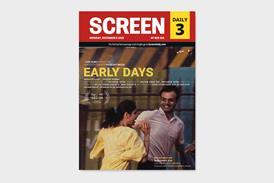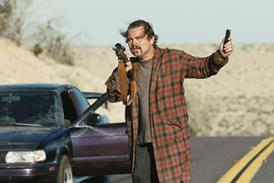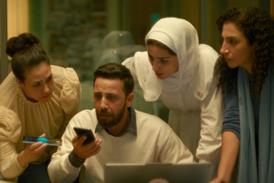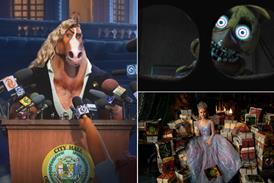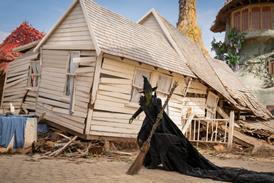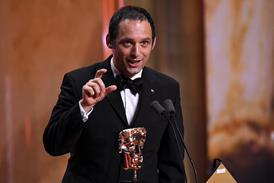Sergei Loznitsa presents a vivid document of the effects of the Russian invasion on Ukraine
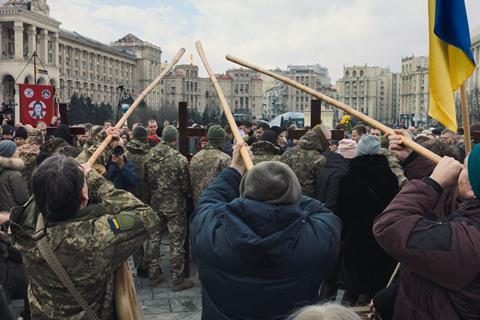
Dir/scr: Sergei Loznitsa. Netherlands/France/US 2024. 145mins
Ten years ago, Ukrainian director Sergei Loznitsa released Maidan, his documentary chronicling the protests against the government of his country’s then president, Viktor Yanukovych. Now comes The Invasion, effectively a companion piece described as the second half of a Ukrainian diptych. A portrait of Ukraine over the last two years, since the start of Russia’s invasion, the film does not so much depict war as its effects on a people. Armed conflict per se is not seen, more hinted at; what Loznitsa shows instead is the invasion’s effects on those who show resilience in the face of pressures and the grief that they have become accustomed to as a fact of everyday life.
A vivid feeling of events happening in the present tense
By contrast with some prominent documentaries on the conflict, such as Mstyslav Chernov’s 20 Days In Mariupol, Loznitsa’s film does not thrust us into the heart of war’s chaos – nor does it aim for kinetic urgency. Instead, this is a contemplative piece which echoes the calm detachment of Maidan and other observational documentaries of Loznitsa’s, such as 2018’s Victory Day. Buildings wholly or partly wrecked by shelling, and physical damage infliced on people, only begin to appear some way in.
Death, however, makes its presence felt at the very start, in a 15-minute prologue preceding the title card. It shows a funeral for several soldiers killed in conflict – a sequence echoed later by burials of further casualties and, at the very end, a long wall plastered with the images of soldiers killed in battle. Ceremonies, both grievous and joyous, run throughout – including the marriage of a young soldier, seen waltzing with his bride. Such scenes inscribe the film with a sense of a people determined to sustain a life of normality under pressure – although we cannot help but wonder what lies in store for this young couple, and multitudes like them.
The film is constructed of extended sequences, shot around Ukraine, each dealing with a different set of people or a general theme. We see a young female soldier hand out Christmas presents to village children, then carry on with her work distributing army supplies. She speculates about the possible release of her husband, captured by Russian forces; her calm and general bonhomie in subsequent scenes are all the more admirable, given what she tells us of the brutal treatment endured by a POW friend of hers.
Scenes not specifically related to the conflict include a baptism ceremony, with adults immersing themselves in icy waters, and a soldier and his partner tending their new-born baby. More directly war-related are scenes at a school, where young children’s classes continue in the cellars following an air raid warning; a hospital sequence, showing rehab sessions for people who have lost limbs in action; and, perhaps the most intense sequence, firefighters attempting to locate survivors amid the smoke and debris of a totally destroyed building.
The camerawork, by DPs Evgeny Adamenko and Piotr Pawlus, shows exceptional crispness and clarity, their measured approach particularly effective in a scene on a wrecked bridge in the countryside. The camera shows a group of locals talking and, as they react to the sound of nearby explosions, it does not wheel away but holds steady, watching their response.
As per Loznista’s usual approach, The Invasion contains no commentary. But our attention to what is happening at given moments is directed by the carefully sculpted sound design by Loznista’s customary collaborator Vladimir Golovnitski, often picking out key scraps of overheard dialogue. The overall detachment helps create a vivid feeling of events happening in the present tense, but also allows us space to speculate about the film’s position on certain things we see. One passage that leaves judgement to the viewer records the very systematically organised pulping of a mass of books printed in the Russian language, from Dostoevsky to Theodor Dreyer.
Loznitsa himself, as he has noted, was not present during the filming, but remained in the editing room, working on material shot by small crews in different locations around Ukraine. This approach may not endear him to viewers in Ukraine, where he has become a polarising figure – not least because of his opposition to a boycott on Russian film-makers. But here he has made a characteristically compelling film that can only be seen as honouring his beleaguered nation, and that should help bring further attention to the situation of Ukraine at a time when the world’s attention to the war risks being eclipsed by conflict elsewhere.
Production company: Atoms & Void
International sales: Atoms & Void contact@atomsvoid.com
Producers: Sergei Loznitsa, Maria Choustova
Cinematography: Evgeny Adamenko, Piotr Pawlus
Editor: Danielius Kokanauskis, Sergei Loznitsa

